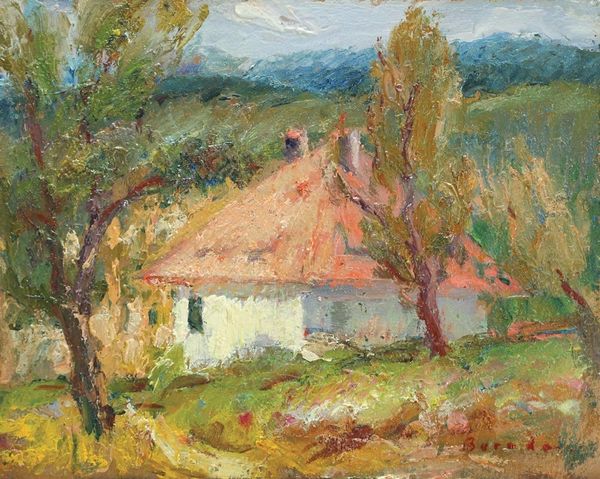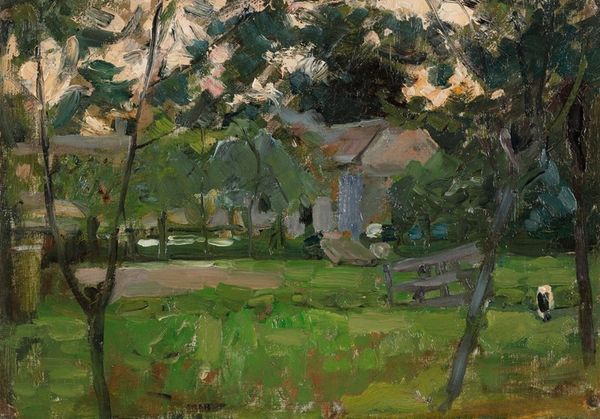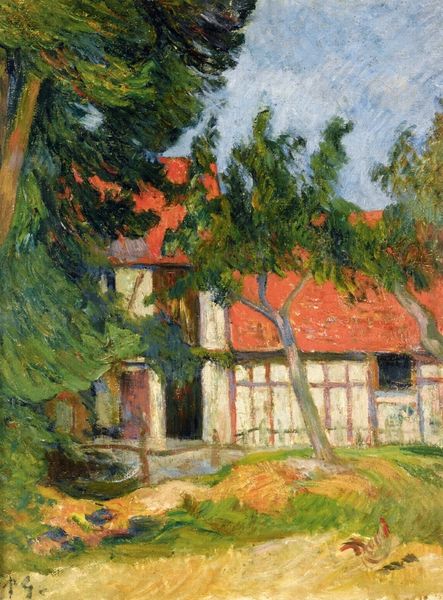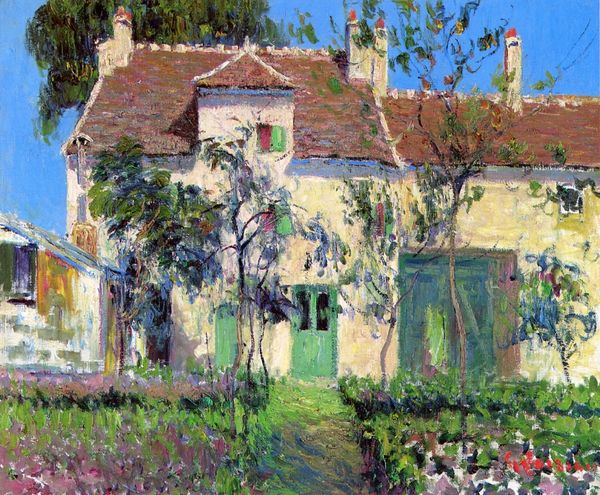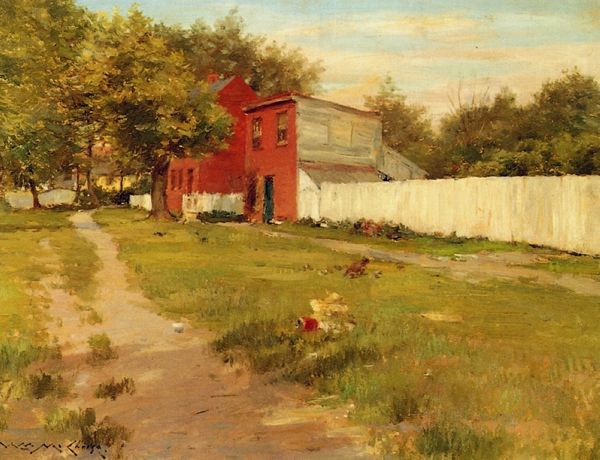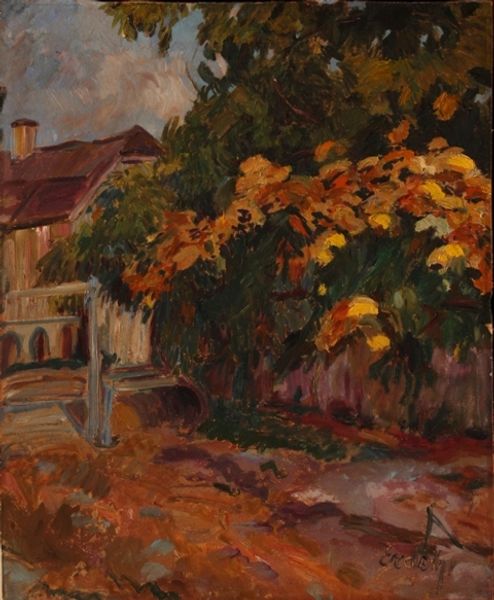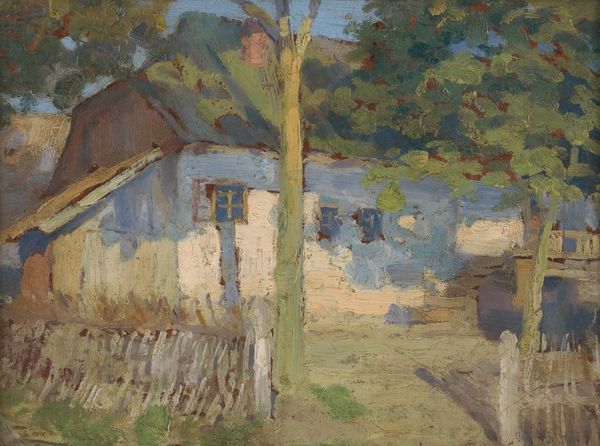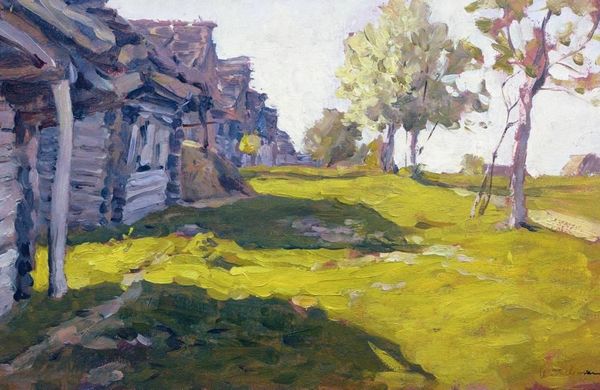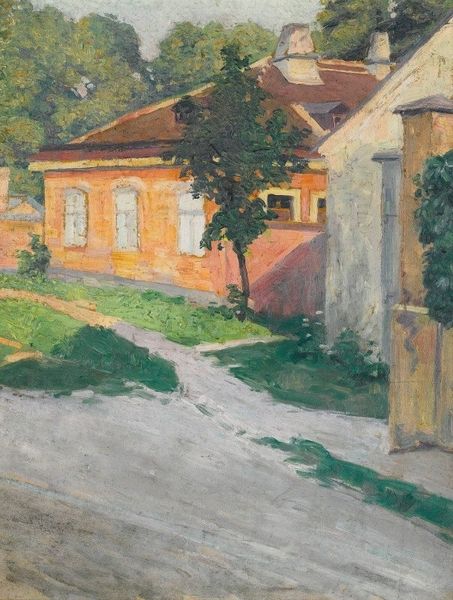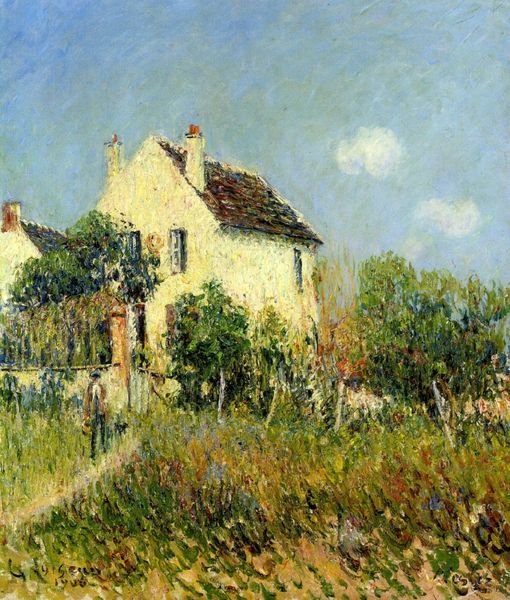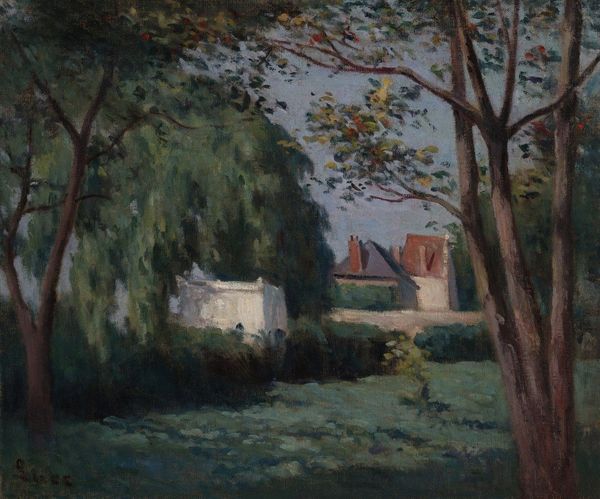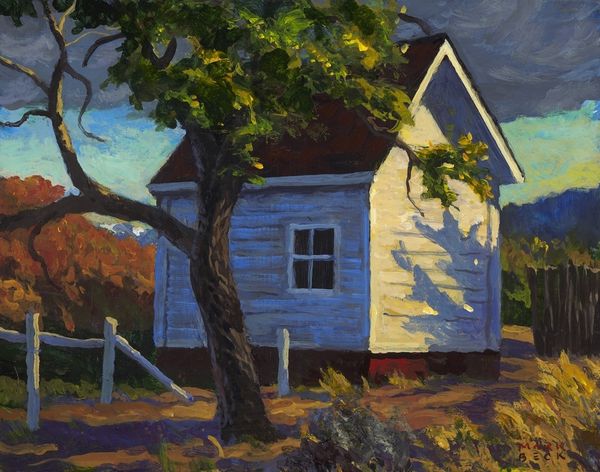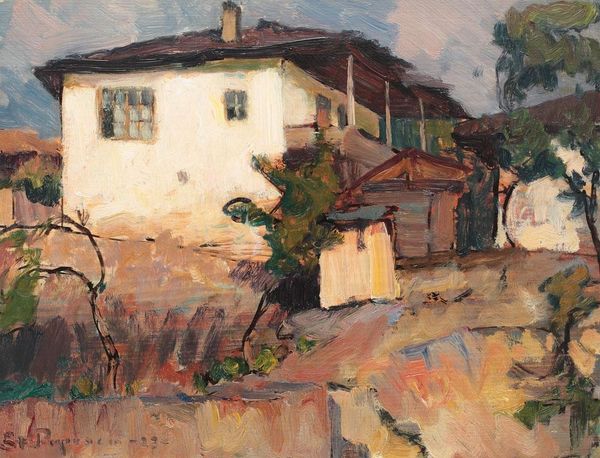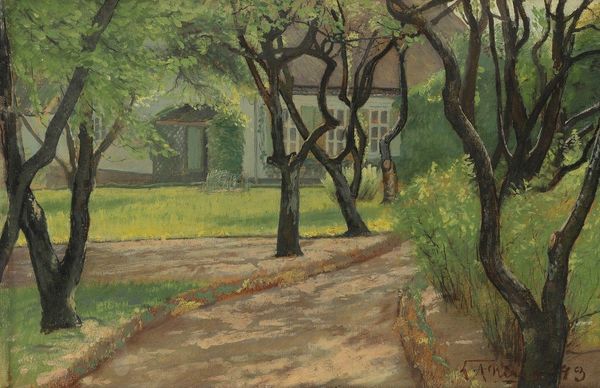
plein-air, oil-paint
#
impressionism
#
plein-air
#
oil-paint
#
landscape
#
impressionist landscape
#
nature
#
oil painting
#
cityscape
Dimensions: overall: 63.7 x 76.2 cm (25 1/16 x 30 in.) framed: 97.16 × 106.05 × 4.45 cm (38 1/4 × 41 3/4 × 1 3/4 in.)
Copyright: National Gallery of Art: CC0 1.0
Curator: This is Dennis Miller Bunker's "Roadside Cottage," painted in 1889. It's an oil-on-canvas work, exhibiting his experimentation with Impressionism while painting en plein air. Editor: It's certainly luminous! That vibrant green hill against the stark white cottage almost vibrates. You can practically feel the sun on your skin. I imagine Bunker painstakingly mixed his pigments. Curator: Precisely. The materiality here is key. Notice the brushwork—how Bunker uses short, broken strokes of color to capture the fleeting effects of light and shadow on the building. These techniques, facilitated by developments in pigment production, liberated artists from studio constraints, fostering a new appreciation for outdoor observation and working. Editor: Absolutely, and it makes me wonder about the social context too. Plein air painting becoming popular suggests a shift in cultural values—a move toward appreciating leisure and nature, accessible to certain populations with the resources to leave city centers and commission or buy such art. Who were Bunker's patrons, and what did paintings like this represent to them? Curator: Bunker belonged to a circle of artists exploring Impressionism in America. While initially celebrated, artists were struggling to establish its place in American visual culture. Bunker’s decision to focus on quotidian scenes also aligns with his more traditional artistic training; it represents a middle ground for American audiences perhaps unfamiliar with French Impressionist subjects, demonstrating the tension between the artistic movements. Editor: Which reminds me of how art institutions validated such subject matters. Did this particular work gain immediate traction in galleries? Its presentation would reflect on societal acceptance and aesthetic preferences of the period, affecting what themes resonated. The image itself, while seemingly innocuous, may subtly engage with ideologies and prevailing narratives related to nationhood, class, and land ownership in post-Civil War America. Curator: Indeed, this discussion highlights the ways art not only embodies its making but reflects its moment in time, shaping cultural identities and social narratives. Editor: In effect, paintings such as this provide insights into shifts that reveal American cultural growth alongside industry innovation. They are historical texts written in oil paint, connecting pigments to the people and forces around them.
Comments
No comments
Be the first to comment and join the conversation on the ultimate creative platform.
